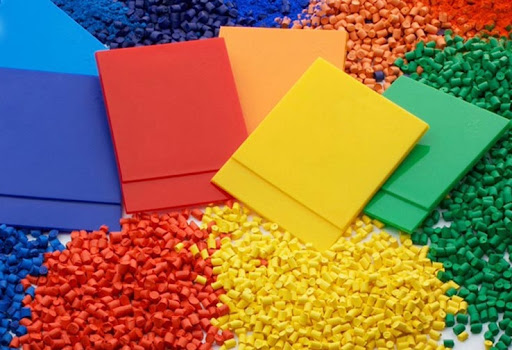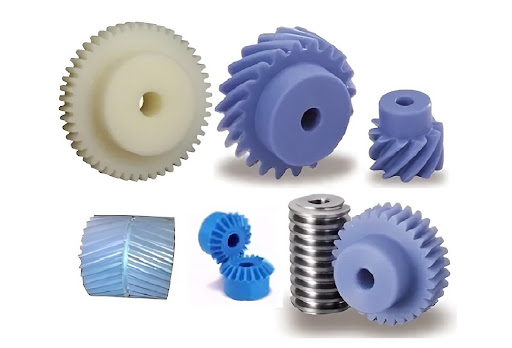
by Kandui Industries Pvt. Ltd. | Aug 4, 2025 | Masterbatches
Introduction:
In the quest for sustainable practices and eco-friendly solutions, the plastic industry faces the challenge of minimizing its environmental impact without compromising product quality. Enter Universal Masterbatches – a revolutionary approach that offers a sustainable solution to plastic manufacturing. In this blog, we will delve into the concept of Universal Masterbatches and explore how they contribute to a greener future while maintaining the versatility and performance that the plastic industry demands.
Understanding Universal Masterbatches:
Universal Masterbatches are innovative additives that have gained momentum in the plastic manufacturing industry. Unlike traditional masterbatches, which are tailored to specific plastic resins, Universal Masterbatches are designed to be compatible with a wide range of polymers. This versatility allows manufacturers to streamline their production processes and reduce the number of different masterbatch formulations, ultimately leading to a more sustainable approach.
Simplified Inventory Management:
With Universal Masterbatches, manufacturers can simplify their inventory management significantly. Instead of stocking multiple specialized masterbatches for different plastic resins, they can now use a single Universal Masterbatch that works across various materials. This not only reduces warehousing requirements but also minimizes the risk of inventory waste, creating a more efficient and cost-effective supply chain.
Reduced Energy Consumption:
Universal Masterbatches contribute to sustainability by promoting energy efficiency during the manufacturing process. As they are compatible with multiple plastic resins, manufacturers can optimize their processing conditions, reducing the energy required for adjusting machines and creating products. The result is a notable reduction in greenhouse gas emissions and overall energy consumption.
Minimized Plastic Waste:
Plastic waste is a pressing environmental concern. Universal Masterbatches play a vital role in minimizing plastic waste by allowing manufacturers to use a single masterbatch for multiple applications and plastic types. This means that leftover masterbatch can be used in different productions, reducing material wastage and enhancing resource utilization.
Transition to Recycled Plastics:
The use of Universal Masterbatches also facilitates the transition to recycled plastics. As the masterbatches can be applied to different types of recycled plastic resins, manufacturers can incorporate higher percentages of recycled content into their products without compromising quality or consistency. This promotes a circular economy and reduces the demand for virgin plastics.
Meeting Sustainability Goals:
Many industries are setting ambitious sustainability goals to reduce their environmental footprint. Universal Masterbatches provide an effective solution for plastic manufacturers to align with these goals. By adopting sustainable practices and eco-friendly products, manufacturers can enhance their brand reputation, attract environmentally conscious consumers, and contribute positively to a greener future.
Conclusion:
Universal Masterbatches represent a significant step forward in the pursuit of sustainable plastic manufacturing. By offering compatibility with a wide range of plastic resins, these innovative additives streamline production processes, reduce energy consumption, minimize plastic waste, and enable the use of recycled materials. Embracing Universal Masterbatches allows manufacturers to take a giant leap towards a more sustainable and environmentally responsible future while maintaining the performance and versatility that the plastic industry demands. As the demand for eco-friendly products continues to grow, Universal Masterbatches offer a game-changing solution to create a greener and more sustainable world.

by Kandui Industries Pvt. Ltd. | Jul 21, 2025 | Color Masterbatch, Masterbatches
Colour masterbatches, also known as colour concentrates, are additives used in the plastics industry to provide specific colours to plastic products. They are concentrated mixtures of pigments or dyes dispersed in a carrier resin.
Colour masterbatches are widely used in various plastic applications to achieve desired colours in products such as films, sheets, bottles, containers, toys, and many other plastic items. They offer a convenient way to incorporate colour into plastic formulations without the need for extensive colour mixing or direct addition of pigments.
The masterbatch is typically added to the base polymer during the manufacturing process. It is mixed with the base resin to achieve the desired colour and opacity. The concentration of the colour masterbatch added depends on the desired intensity of the colour and the transparency of the final product. Different grades and concentrations of colour masterbatches are available to meet specific application requirements.
Colour masterbatches offer several advantages, including consistent colour reproduction, improved dispersion of pigments, ease of handling and storage, and flexibility in adjusting the colour intensity. They also allow manufacturers to achieve a wide range of colours by using different combinations of pigments or dyes.
It’s important to note that colour masterbatches are available in various types and formulations, each suitable for different plastic materials and processing conditions. Manufacturers often provide a range of standard colours, but custom colour matching is also possible to meet specific colour requirements.
Overall, colour masterbatches play a crucial role in the plastic industry by providing an efficient and cost-effective solution to achieve consistent and vibrant colours in plastic products.

by Kandui Industries Pvt. Ltd. | Jun 16, 2025 | Masterbatches
Masterbatches play a crucial role in the plastics industry, serving as a cost-effective and efficient way to incorporate colour, additives, or other properties into plastic products. When sourcing masterbatches, choosing the right supplier is paramount to the success of your manufacturing processes. In recent years, Masterbatch Company In India has emerged as a prominent hub for masterbatch manufacturing.
Table of Content
In this blog post, we will explore the key factors to consider when buying masterbatches from an Indian supplier.
Quality Assurance and Certifications:
Quality is non-negotiable in the plastics industry. Ensure that the Indian masterbatch manufacturer adheres to international quality standards and possesses relevant certifications such as ISO 9001:2015. Certifications signify a commitment to quality control processes and consistency in product performance. Look for suppliers who regularly conduct quality tests on their masterbatches, ensuring they meet industry-specific requirements.
Product Range and Customization Options:
A reputable masterbatch manufacturer should offer a diverse range of products to cater to different applications and industries. Consider suppliers that provide a wide spectrum of masterbatch types, including colour, additive, and specialty masterbatches. Additionally, the ability to customize masterbatches according to your specific requirements is a crucial factor. A supplier with in-house research and development capabilities can offer tailor-made solutions to meet your unique product specifications.
Supply Chain Reliability and Timely Delivery:
Timely delivery is critical in the manufacturing process to maintain efficiency and meet production deadlines. Evaluate the Indian masterbatch supplier’s supply chain capabilities and assess their track record in delivering orders on time. A reliable supplier should have robust logistics and distribution networks in place to ensure that your masterbatches reach you in a timely manner, minimizing production delays.
Technical Support and Expertise:
Technical support is invaluable, especially when dealing with complex applications or troubleshooting issues. Look for a supplier that offers comprehensive technical assistance and has a team of experts who can guide you through the selection and application processes. The supplier’s technical expertise can contribute to the successful integration of masterbatches into your manufacturing processes, ensuring optimal performance and quality in the end product.
Also Read:- The Process Of Slip Additive Masterbatch Production And Its Usage
Environmental and Regulatory Compliance:
Sustainable and eco-friendly practices are gaining prominence in the plastics industry. Choose an Indian masterbatch supplier that complies with environmental regulations and adopts sustainable manufacturing practices. Suppliers committed to minimizing their environmental impact demonstrate responsibility and contribute to the overall sustainability goals of your business. Inquire about the supplier’s approach to waste management, recycling, and adherence to regulatory standards.
Choosing the right Masterbatch Company In India involves a thorough evaluation of various factors, including quality assurance, product range, supply chain reliability, technical support, and environmental compliance. By carefully considering these aspects, you can ensure that your partnership with an Indian masterbatch supplier contributes to the success and sustainability of your manufacturing processes.

by Kandui Industries Pvt. Ltd. | May 19, 2025 | Color Masterbatch, Masterbatches
Engineering polymer colour masterbatch offers several advantages in various industries.
Here Are The Top Five Advantages:
Consistent Coloration:
Engineering polymer colour masterbatch ensures consistent and uniform coloration of plastic materials. This is essential for industries where colour consistency is crucial, such as automotive, consumer electronics, and packaging. The masterbatch contains pre-dispersed pigments or dyes, resulting in even colour distribution throughout the final product.
Ease of Use:
Using colour masterbatch simplifies the manufacturing process. Instead of handling and measuring individual pigment powders, manufacturers can directly add the masterbatch to the polymer resin. This streamlines production, reduces the risk of errors, and saves time and labor costs.
Cost-Effective:
Engineering polymer colour masterbatch can be more cost-effective than buying individual pigments in bulk. The pre-dispersed pigments in masterbatch form can be precisely dosed, minimizing waste and reducing material expenses. Additionally, it often requires less storage space than storing multiple pigment powders.
Customization:
Masterbatch allows for easy colour customization. Manufacturers can work with suppliers to create custom colours that meet specific design or branding requirements. This flexibility is valuable in industries where unique product aesthetics are a competitive advantage.
Improved Quality:
Using colour masterbatch can lead to higher product quality. Because the pigments are uniformly dispersed, there is less risk of streaking or uneven coloration in the final product. This consistency contributes to better overall product appearance and performance.
In summary, engineering polymer colour masterbatch simplifies the coloration process, enhances consistency, reduces costs, offers customization options, and contributes to higher product quality, making it a valuable choice for industries that require coloured plastic materials.

by Kandui Industries Pvt. Ltd. | Mar 31, 2025 | General, Masterbatches
As the name indicates, BREATHEEZE® is about the ability to pass air and moisture through any medium. This can be a cloth, fabric, film, membrane, or anything similar. Here, it is a film that is permeable to gases and water vapour but impermeable to anything in a liquid state. So, a good breathable film gives excellent comfort while protecting from infection and rashes. More clearly, BREATHEEZE® is a special plastic compound used to make such films. The films are mastered for manufacturing hygiene products like baby diapers, adult diapers, sanitary napkins and PPE suits.
Leading The Way Toward Better Customer Satisfaction
There were multiple challenges in achieving the optimum comfort level. But the perception of discomfort ratings is significantly associated with the increase in skin temperatures and sweat rates. So, to provide unparalleled customer satisfaction not only requires a deep understanding of the market but also an understanding and knowing the technology that favours innovation to bring out a product that makes a difference.
The Technology Behind The Innovation
For giving proper comfort and customer satisfaction, the below properties are of great importance in developing a good breathable film.
- Good tensile strength
- Required level of Elongation
- Good Printability and Gloss
- Aesthetics –Opacity & Whiteness
- WVTR-Water Vapour Transmission rate
The breathable films can be produced by various processing techniques like Cast or Blown film method. The BREATHEEZE® Compounds are manufactured with different concentrations of polymers and a very fine Calcium Carbonate with specific particle size distribution and coating. The compounds can help achieve different WVTR levels and other properties, but the properties can be better modified by the end product manufacturers by changing the process parameters. Customization is also possible at both levels that allows delivering exactly what the market requires.
This breathable compound is widely used in hygiene products that demand the highest quality of protection and sanitation. The compounds are produced using advanced compounding techniques, keeping the product value in mind and the growing sensitivity and consumer awareness about these products. The production process needs to be monitored, both online and physically, and rheological properties are measured frequently to ensure product consistency.
When a product flies off the shelf, the consumers only know half of the story behind its success. What they get to see is the branding and advertising behind the products. But there are several unsung heroes who make a product what it is with their unwavering resolve to provide the best raw material. And Kandui is surely one of them. Their promise to provide nothing but the best has helped them manufacture products that have stood the test of time and they continue to be the industry leader in making a compound that adds more life to its end products.
Conclusion
BREATHEEZE® compounds are a vital ingredient in making a microporous film used in various hygiene applications. This compound is designed to impart strength, softness and better adhesion to the fabric that is available with various WVTR ratings. Earlier, these products were widely imported as the polymer industry in India lacked proper knowledge, experience and infrastructure. Even though a lot has changed since then, only a few manufacturers have been able to develop Masterbatches of the highest quality and provide customisation to perfectly match the customer’s requirements.
The hygiene product market has evolved as a highly competitive business space where rising customer awareness about personal hygiene and safety has pushed manufacturers and leading brands to up their game in providing products that fulfil customer expectations. At a time when customers have access to the best global products, Indian manufacturers have made giant strides in developing products like BREATHEEZE® that are sure to make an impact in the long run.

by Kandui Industries Pvt. Ltd. | Mar 24, 2025 | Additive Masterbatch, Masterbatches
Slip additive masterbatch is a type of masterbatch used in the plastics industry to reduce the coefficient of friction between plastic surfaces. This can help prevent sticking, improve processing, and enhance the overall performance of plastic products.
Here’s An Overview Of The Production Process And Usage Of Slip Additive Masterbatch:
Production Process:
Raw Materials: The primary raw materials for slip additive masterbatch production include a carrier resin and the slip agent itself. The carrier resin is typically a polymer compatible with the target application, such as polyethylene (PE), polypropylene (PP), or other plastics. The slip agent is a specialized additive that reduces friction.
Mixing: The slip agent is compounded or blended with the carrier resin using specialized equipment like twin-screw extruders or high-speed mixers. The goal is to achieve a uniform and homogenous mixture. The concentration of the slip agent in the masterbatch can vary based on the desired slip properties and the type of plastic it will be used with.
Pelletizing: The compounded mixture is then pelletized, forming small granules or pellets of slip additive masterbatch. These pellets are easy to handle and can be stored until needed.
Usage: Slip additive masterbatch is used in various plastic processing applications to reduce the friction between plastic surfaces and provide several benefits:
Enhanced Processing: It is commonly used in plastic processing, such as injection moulding, extrusion, and film production. The reduced friction helps in smoother processing, preventing melt fracture, and improving the flow of molten plastic. This can lead to better-quality products with fewer defects.
Preventing Sticking: Slip additive masterbatch can prevent plastic products from sticking together during manufacturing and storage. This is particularly useful in applications like packaging, where products need to easily separate from one another.
Improved Surface Quality: The use of slip additives can lead to improved surface quality in plastic products, reducing surface imperfections and enhancing the appearance of the final product.
Functionality: Slip additives are used in various industries, such as food packaging and medical devices, to ensure that products can be easily handled or separated without any friction-related issues.
Cost Savings: By reducing the coefficient of friction, slip additive masterbatch can also reduce wear and tear on processing equipment and packaging machinery, leading to cost savings in maintenance and replacement.
Customization: Manufacturers can adjust the concentration of slip additive masterbatch to meet specific performance requirements, allowing for customization based on the application’s needs.
In summary, slip additive masterbatch is a valuable tool in the plastics industry for reducing friction between plastic surfaces. Its production involves compounding a carrier resin with a slip agent, and its usage improves processing, prevents sticking, enhances surface quality, and offers customization options for various plastic applications.







